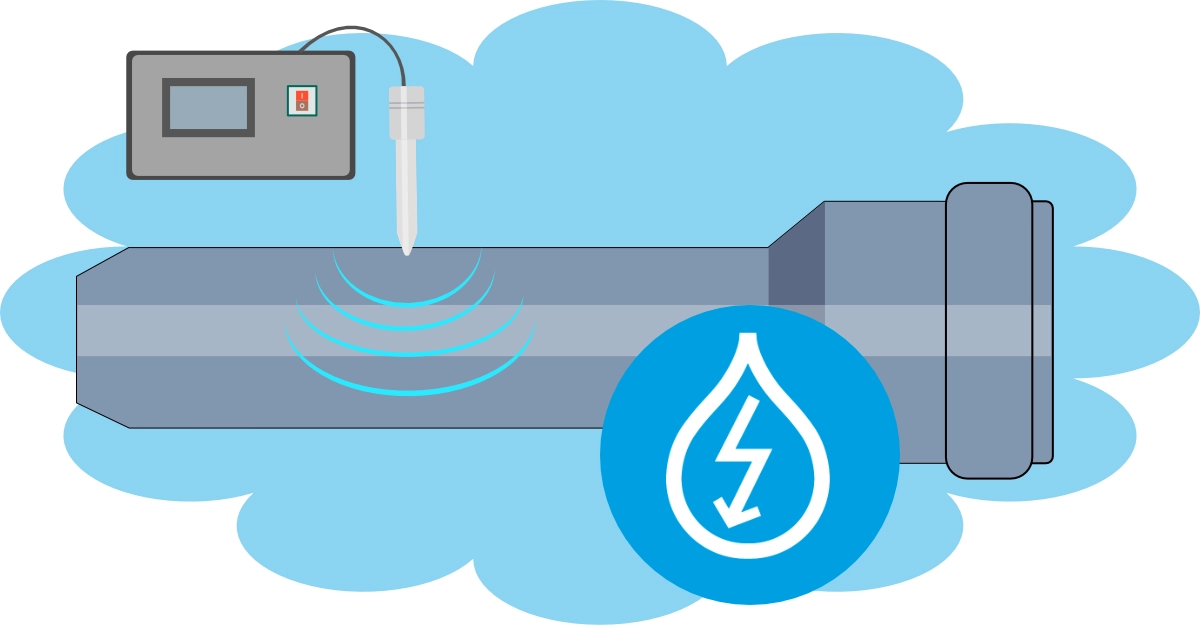Microbial growth and biofilm formation are common challenges in various industrial processes, particularly in the food and chemical industries. To address these issues, several technologies are available that focus on improving hygiene and combating microbial contamination. Two widely used methods are the application of hypochlorous acid (HOCl) and ultrasonic cleaning.
A brief introduction to both methods
The Watter system produces a disinfectant on-site with the active ingredient HOCl, a powerful oxidiser. This system is often employed for the continuous disinfection of process water. On the other hand, ultrasonic cleaning uses sound waves to mechanically remove biofilms and contaminants. Both methods have their advantages and limitations, depending on the specific use and conditions. Like UV-C, ultrasonic cleaning is a point-of-use method, meaning it is applied directly at the site of use to combat microbial contamination. Both methods are suitable for specific applications where direct and rapid disinfection is required.
Drawbacks of point-of-use methods
A key drawback of point-of-use methods, such as UV-C and ultrasonic technology, is that they often have only a localised and direct effect. This means their effectiveness is limited to the point of application, without offering long-term protection against recontamination further along the system. Once water or surfaces come into contact with contaminating sources again, microbial growth can quickly return. Furthermore, these methods often require regular maintenance and monitoring to ensure optimal effectiveness, which can lead to additional operational efforts.
Comparison: continuous dosing with HOCl vs. ultrasonic disinfection
The table below presents a fair comparison between continuous HOCl dosing and ultrasonic cleaning.
| Category | HOCl | Ultrasonic cleaning |
|---|---|---|
| Mechanism of action | HOCl is a powerful oxidiser that destroys bacteria, viruses, fungi, and biofilms by penetrating cell walls and denaturing proteins and enzymes. It is continuously added to prevent microbial growth. | High-frequency sound waves cause cavitation, which mechanically damages the cell walls of microorganisms and disrupts biofilms. It primarily removes surface contaminants but has a less direct chemical action. |
| Effectiveness against biofilm | HOCl is effective against biofilms as it can penetrate the protective matrix of biofilms and destroy microorganisms, provided it is in sufficient concentration and contact time [1]. | Ultrasonic cleaning mechanically disrupts biofilms through cavitation but doesn’t always kill all microorganisms. It can break up the biofilm structure, which can support other disinfection methods such as HOCl [2]. |
| Continuous vs. periodic treatment | Continuous dosing of HOCl ensures ongoing disinfection of process water, preventing microorganisms from establishing and multiplying. This provides continuous protection [3]. | Ultrasonic cleaning is a periodic process, effective for removing existing biofilms, but it does not offer permanent protection against microbial growth. Regular repetition is required to maintain hygiene [4]. |
| Safety and environmental impact | HOCl is safe for humans, animals, and the environment in low concentrations and degrades quickly into salt and water. Low dosages minimise the formation of harmful by-products such as trihalomethanes (THMs) [5]. On-site generation results in lower CO2 emissions and fewer hazardous chemicals in stock. | Ultrasonic cleaning has no direct chemical side effects, making it environmentally friendly. However, the process consumes energy, and the equipment requires regular maintenance to remain efficient [6]. By using the equipment, there is no need for periodic chemical deliveries, and fewer hazardous chemicals are stored on-site. |
| Costs and maintenance | The costs of continuous HOCl dosing include the purchase of the system, costs for salt, water, and electricity, as well as service and maintenance. The operational costs for producing 1,000 litres of disinfectant with the Watter system are only €8, but actual costs depend on water quality and the required volume. | Ultrasonic equipment must also be purchased initially, but operational costs are low as no chemicals are required. Regular maintenance is necessary to maintain the equipment's effectiveness, especially with continuous use [7]. |
In summary
In terms of environmental friendliness, both methods are quite comparable. The major difference lies in the point-of-use nature of ultrasonic cleaning, which does not clean the entire piping system. In terms of effectiveness, HOCl kills the biofilm and bacteria (as well as fungi and yeasts), while ultrasonic cleaning shakes the biofilm loose and often kills only part of the bacteria.
Sources:
- Douterelo, I., Sharpe, R. L., & Boxall, J. B. (2014). Biofilm formation in drinking water: a laboratory comparative study of different disinfection methods. Water Research, 65, 224-236.
- LeChevallier, M. W., & Au, K. K. (2004). Water Treatment and Pathogen Control: Process Efficiency in Achieving Safe Drinking Water. WHO Press.
- Barbot, E., et al. (2010). Application of Hypochlorous Acid to Biofilm Control: Case Study of Cooling Tower Systems. Journal of Applied Microbiology, 109(1), 30-36.
- Patil, P. N., et al. (2017). Ultrasound: A Potential Method for Biofilm Disruption. Water Research, 130, 168-180.
- Deborde, M., & von Gunten, U. (2008). Reactions of chlorine with inorganic and organic compounds during water treatment: Kinetics and mechanisms: A critical review. Water Research, 42(1-2), 13-51.
- Mason, T. J., & Peters, D. (2002). Practical Sonochemistry: Power Ultrasound Uses and Applications. Woodhead Publishing.
- Wang, H., et al. (2019). Ultrasound in the Control of Biofilm Formation: A Review. Ultrasonics Sonochemistry, 55, 103-113.
Interested in a no-obligation introductory meeting?
We would be happy to meet with you digitally to explain more about our application and to discuss the possibility of improving and making your disinfection process more sustainable. In 45 minutes, we can gain a good understanding of the opportunities and challenges. This meeting is often considered efficient and pleasant. Discover it for yourself and get in touch soon.





